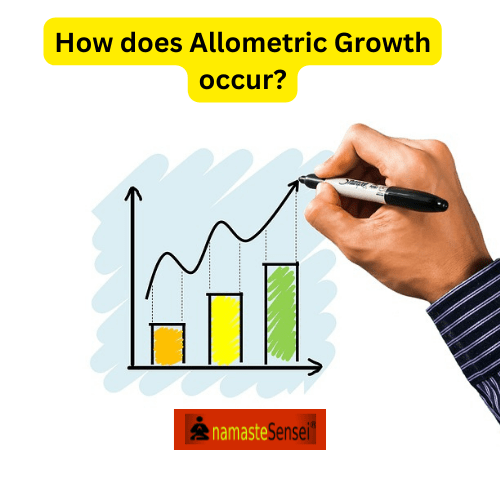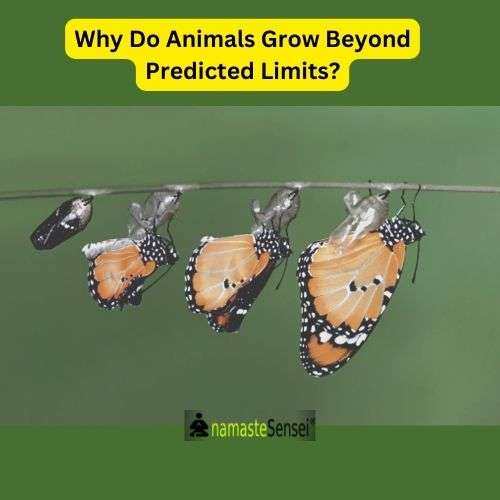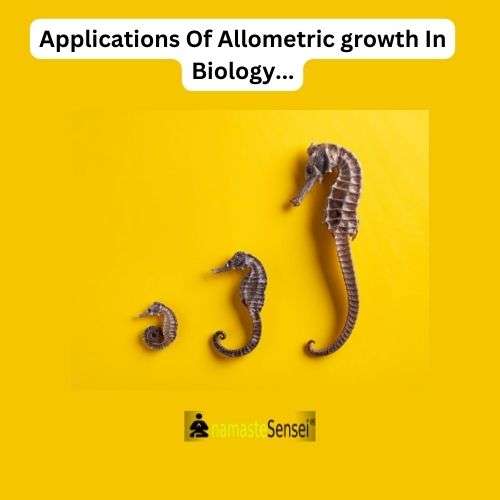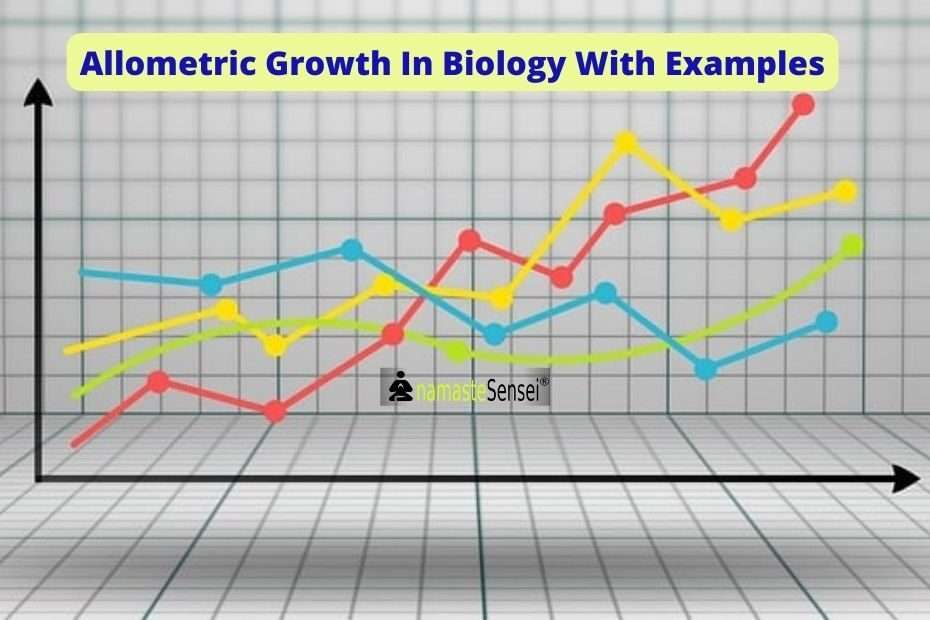Allometric Growth Definition | What is Allometric Growth In Biology?

Allometric growth in biology refers to the relationship between body size and the metabolic rate in an organism. This relationship has important ramifications both in ecology and evolution, which means anyone interested in either of these fields should understand that allometric growth.
In this article, we’ll go over some example cases of allometric growth, as well as what causes it in the first place. Firstly let’s go through the Allomatric growth definition.
Allometric Growth Definition
The term allometry comes from two Greek words, allo, which means different, and metron, which means measure. Thus, allometry can be loosely defined as a study of the relationship between different measurements of different structures of living organisms.
In simple terms, it refers to an organism’s body size relative to its organ size or metabolic rate. We can say that allometric growth is when organs grow at different rates than body size increases or decrease proportionally with changes in body size. This occurs in almost every animal species, including humans.
For example, if we compare human brain weight with human body weight over time, they do not increase proportionally; brain weight rises much faster than body weight.
Also, human arms and legs grow at a faster rate than the body and head, making adult proportions strikingly different from those of infants.
This phenomenon is called allometric growth and hence, we can say that the brain grows allometrically compared to overall body mass. Similarly, there are many other examples of allometric growth such as heart muscle mass increasing faster than overall body mass, etc.
How Does allometric growth Occur?

If we are to better explain allometric growth, we must first provide an allometric growth equation and allometric growth definition. Though such terms can seem intimidating, understanding these will help us fully grasp what exactly allometric growth represents.
To start with, what is an equation?
An equation can be described as a mathematical statement that explains a particular relationship between two or more variables. In our case, it involves describing how body size and overall weight relate to one another during allometric growth.
Allometric Growth Equation
In 1932, Sir Julian Huxley described a simple mathematical method for the detection and measurement of allometric growth. In order to compare the relative growth of two components (one of which may be the whole body), they are plotted logarithmically on x– and y-axes:
|
log y = log b + k log x The slope of the resulting regression is called the allometric growth ratio, often designated as k. k = 1, both components are growing at the same rate. k < 1, the component represented on the y-axis is growing more slowly than the component on the x-axis. k > 1, the y-axis component is growing faster than the x-axis component. Yet another formula for measuring allometric growth is Y = bxa/c, |
To better understand what an allometric growth equation is, consider a pithy example.
- Imagine you’ve been given the task of converting 100 liters of water into kilograms. Now, there are three different methods to go about doing so.
- You can either take 50 liters of water and divide it by 2, or you can take 10 liters and divide it by 5, or you could take a little over 1 liter and divide it by 20.
- Each one will give you a different answer, but they will be related to each other as well.
In essence, that’s how an allometric growth equation works–it describes how two variables are related to one another during allometric growth.
Why Do Animals Grow Beyond Predicted Limits?

What causes allometry, and why do scientists study it?
Allometric growth refers to an observed pattern in nature where some species of organisms grow disproportionately large compared to other members of their own species or related species, despite being subject to similar environmental conditions.
This disproportionate growth can be measured by comparing body mass versus body length among individuals of different ages within a single population or between populations from different habitats.
As you might imagine, there are many factors that influence allometric growth in animals.
But why do animals grow beyond predicted limits?
Let’s look at some of these factors below.
- Competition for Food: In ecosystems with high competition for food resources, animals will compete aggressively for limited food sources, resulting in greater competitive abilities (and therefore larger sizes) among certain species.
The largest members of a population typically benefit from access to higher quality food resources than smaller ones because they have stronger bodies and therefore require more calories per day.
The large size also comes with benefits like increased fighting ability, which means larger predators often win out over smaller ones when competing for prey items or mates.
- Nutrition or Food Quality Difference: Animals with access to higher-quality food grow larger than those that live on lower-quality food resources. Why? They have greater access to nutrients that promote body growth.
- Differences in rest and Activity Patterns: Animals that spend more energy than others need to eat more or they can’t grow as fast.
For example, animals that are constantly moving around will require more calories per day than those who spend most of their time resting.
As a result, larger species have higher activity levels compared to smaller ones, which means they must consume greater amounts of food each day in order to maintain their body size.
- Density-Dependent Competition: When animals live at high population densities, there is greater competition for resources like food and mates, resulting in increased aggression among members of a species.
Allometric Growth Examples
- The allometry of organismal life history traits also reflects size-related constraints.
For example, larger organisms grow more slowly than smaller ones because energy and resource acquisition become increasingly difficult as an organism grows larger.
However, longer gestation periods, lower growth rates, and higher reproductive costs are all part of a biological tradeoff: bigger individuals produce fewer offspring than smaller individuals, but those offspring are likely to survive for a longer period due to their superior size at birth.
- There are many additional allometric growth examples in biology.
For example, larger organismal bodies have thicker bones than smaller ones because there’s less stress on each unit area of bone as a function of body weight.Similarly, larger organisms have lower surface-area-to-volume ratios, making them both more efficient at maintaining their internal body temperature and better insulated from environmental temperature fluctuations.
-
There are many examples of allometric growth in biology and nature. Whales and their bones illustrate one example of allometric growth in nature.
Because of their sheer size, as whales get bigger, they don’t continue to add bone at a constant rate—rather; they grow more slowly than expected.
For example, a fin whale has 40 times as much mass as a human but just slightly over 6 times as many bones. -
There are many factors that can account for differences between expected and actual growth. Differences in metabolic demand, hormonal effects, and biomechanical considerations all impact growth.
In addition, because of an organism’s life history or life stage, it might have a nonlinear relationship between size and metabolism.
For example, amphibians and mammals grow quickly as juveniles but experience slower growth later on in their lives. Finally, density-dependent effects can also influence allometric relationships.
Application of Allometric Growth In Biology

Allometric growth in biology studies has also been applied to animal husbandry, archaeology, and urban systems studies.
The most common application of allometry relates to body mass and rates of growth. In biology, size categorizes individuals of a species.
For example, very small birds might be classed as finches, while large birds might be classed as eagles. If a given bird species begins exhibiting an increase in overall size, we can say it is growing allometrically—its body mass index has increased as its rate of growth has decreased.
Bigger animals need more time to develop because it takes longer for their cells to divide and grow.
Conclusion
While our rate of growth may remain constant throughout much of our youth, we follow an allometric pattern as we age—meaning our bodies change shape, and some aspects grow faster than others. For example, a young child’s head grows at a significantly faster rate than her legs; once she reaches adulthood, however, both body parts will have grown to roughly similar sizes.
Allometric growth and related terms may sound a little technical, but they’re actually fairly easy to understand. They describe an important concept in biology, one that’s useful for both researchers and biologists working directly with living organisms.
Congratulations, you have read the complete article about what is Allometric Growth in Biology. If you have any doubts or queries, feel free to comment below. We will respond as soon as possible.
Or Email Us At [email protected]
Any topic you want us to cover? Let us know.
